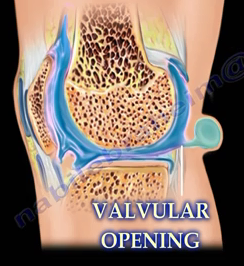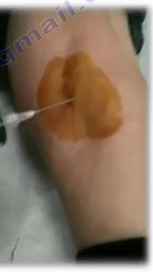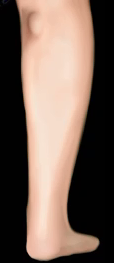Baker's Cyst
A Baker's cyst, also known as a popliteal cyst, is benign swelling found behind the knee that lies posterior to the medial femoral condyle.
The cyst is connected to the knee joint through a valvular opening.
Knee effusion (fluid on the knee) from intra-articular pathology or a meniscal tear, allows the fluid to go through the valve to the cyst in one direction. The cyst is located between the semimembranosus and medial gastrocnemius muscles, in the back of the knee.
Diagnosis
The patient usually has swelling behind the knee with pain, fullness, and tenderness. A baker's cyst is easier to see with the knee fully extended. Diagnosis is confirmed by an MRI that will show the associated intra-articular pathology, usually a meniscal tear. An ultrasound may also be helpful. These tests are important, especially if the cyst is found to be outside of its typical position.
Treatment
Treatment of painful, large cysts may include ice, compression wrapping, corticosteroid medication, strengthening exercises, aspiration of the cyst and/or excision of the cyst. Recurrence of Baker's cysts is common if the intra-articular pathology is not corrected. The best treatment for a Baker's cyst is arthroscopy and debridement of the intra-articular pathology.
The cysts may burst causing calf pain and swelling. An examiner should rule out deep vein thrombosis (DVT) or thrombophlebitis.
Popliteal Cysts in Children
A popliteal cyst in children occurs as a soft tissue mass at the back of the knee. This type of cyst will occur more often in young boys than girls. They are asymptomatic and transilluminate. They are not considered a tumor. Popliteal cysts in children are treated by observation without surgery. They are not associated with a meniscal tear.
For more videos, visit my YouTube page at the link listed below:
https://www.youtube.com/user/nabilebraheim





